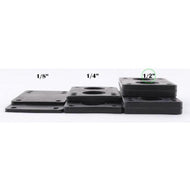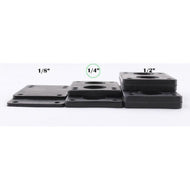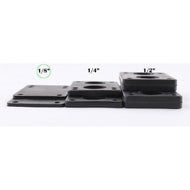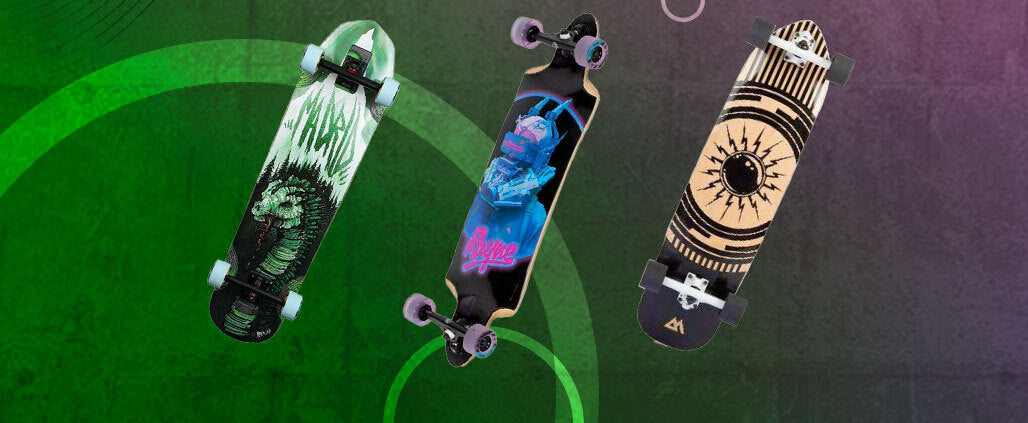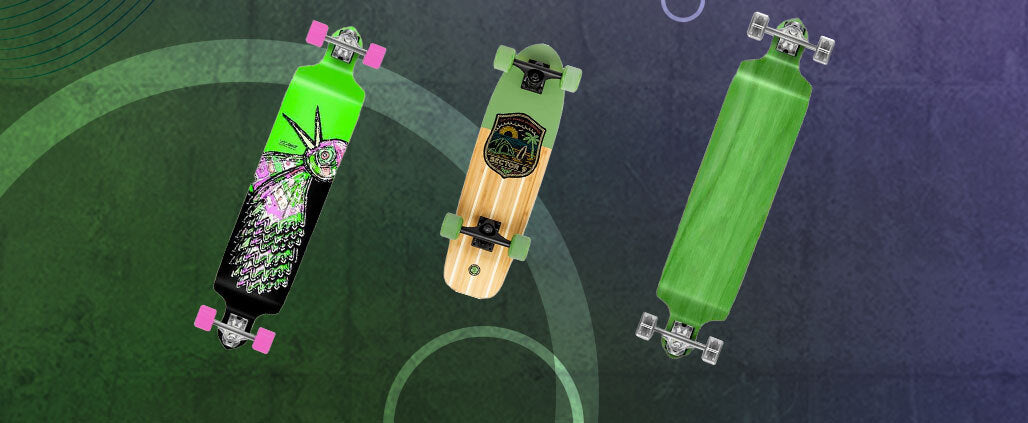
How To Choose The Right Riser Pads for your skateboard longboard
What is Wheel Bite in Skateboarding?
Wheel bite occurs when the wheels of a skateboard make contact with the deck during flips, tricks, or turns, causing friction that may result in a sudden stop and potential wipe out or damage to the wheels. To avoid wheel bite, riders often use riser pads, also known as risers
Riser Pads: Purpose and Variety
Riser pads are plastic rectangular pads placed between the longboard and truck, raising the board's height. Most modern longboards feature wheel wells to combat wheel bite, but risers remain popular for added assurance. Apart from preventing wheel bite, riser pads also reduce stress cracks
A variety of riser pads are available, including various thicknesses, colors, and designs.
Risers and Wheel Size
The size of your wheels determines whether risers are necessary. Typically, larger wheels have a higher chance of wheel bite. Although wheel wells provide extra space for wheels, longboards may still require risers, with larger wheels necessitating higher risers.
Riser Pads and Shock Absorption
Riser pads can also absorb shock, preventing hardware from loosening over time. Most longboards have risers, while drop-through longboards do not. Skateboards and longboard decks with wheels smaller than 55 mm generally don't require risers, but even 1/8" risers can help prevent hardware from vibrating loose.
Riser Pad Holes: Compatibility for All Skateboards
When installing riser pads, you will use four screws to attach the truck and riser pads to the deck. With most standard risers, you will notice six holes instead of just four. The reason for the extra holes is to accommodate both new school and old school skateboards.
Manufacturers include two sets of holes in risers to ensure compatibility with both types of boards. Old school skateboards have mounting holes slightly closer together due to their smaller trucks. This thoughtful design allows risers to be used on both old school and new school boards, providing versatility for skateboarders of all generations.
Hardware Length and Compatibility
When adding risers, ensure your hardware is the appropriate length to accommodate the added height. Riser pads feature six holes for compatibility with both new school and old school skateboards, which have slightly different truck sizes and mounting hole placements.
You do not want to end up with short screws that won't fit anymore. Below is a chart with sizes you need:
- No Riser - 1" to 1.25" hardware
- 1/8" Riser - 1.25" to 1.5" hardware
- 1/4" Riser - 1.25" to 1.5" hardware
- 1/2" Riser - 1.5" to 1.75" hardware
Riser Pad Designs and Shapes
Various riser pad designs and shapes exist, such as rectangular flat risers of different thicknesses, and wedge risers that alter the angle of the kingpin and pivot point. Experimenting with riser pad sizes, shapes, and configurations can help you find the perfect setup for your riding style.
Rectangular flat
 The most common and basic riser is the rectangular flat one in different thickness. It will increase your deck height and decrease the shock. Larger wheels ask for thicker pads. Experiment with different heights to see what works best for you.
The most common and basic riser is the rectangular flat one in different thickness. It will increase your deck height and decrease the shock. Larger wheels ask for thicker pads. Experiment with different heights to see what works best for you.
Wedge Risers

No matter what riser shape you choose, you will need to buy longer hardware to accommodate the extra height.
To view different risers and hardware, check out the hardware and riser page.

